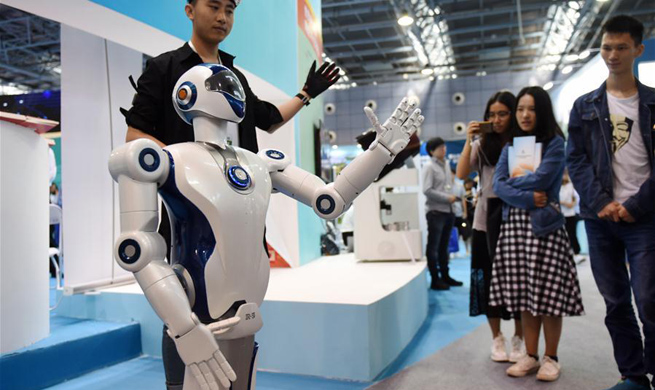WASHINGTON, Sept. 15 (Xinhua) -- Scientists have developed a thin flexible device that brings a refrigerator in your pocket closer to a reality, according to a study published in Friday's issue of the U.S. journal Science.
It's first demonstration of a solid state cooler that could be used to keep your smart phones and laptops cool and prevent overheating, a team of researchers the University of California at Los Angeles (UCLA) and SRI International reported.
The device could also find uses in wearable electronics, in robotic systems that flex and move freely, or even new types of personalized cooling systems, the team said.
"Our research was motivated by personalized cooling for comfort, for example, an active cooling pad could keep a person comfortable in a hot office and thus lower the electricity consumption for building air conditioning," said Qibing Pei, UCLA professor of materials science and engineering who was the principal investigator on the research.
"It may be placed in a shoe insole or in a hat to keep a runner comfortable in the hot Southern California sun. In a way, it's like a personal air conditioner."
The heating issue exists in all kinds of electronic devices in all sizes. For example, smartphones heat up as they are used and even shutdown at higher temperatures, even with interior metal radiators designed to take heat generated from the battery and internal computer processors away. Over the long-term, the heat can damage internal components.
Traditional refrigerating systems rely on so-called vapor-compression technology, which is bulky, complex, and difficult to scale down to meet the cooling demands of modern compact devices. Also the coolant is an environmental hazard.
Qian's solid state cooling device was based on the electrocaloric effect -- a phenomenon where a material temperature changes when an electric field is applied to it.
First, his team selected a type of lightweight ferroelectric polymer that can undergo a large degree of entropy change and use them to create a thin film.
Then, the film was stacked between a heat source and a heat sink and can alternate contact between the two surfaces by the switching on and off of electric voltage, or the electrocaloric effect.
As a result, heat can be transferred via the film from the source, such as a battery or process, to the heat sink, resulting in a cooling effect.
This mechanism does not require much energy and showed superior performance in cooling versus energy required, Qian said. In addition, the device is flexible and can adapt to surfaces with complex curvature or surfaces that move.
"Because EC (electrocaloric) coolers do not need compressors and are low-noise devices, their high efficiency can open up applications beyond household air conditioners and refrigerators that are not possible with coolers based on VCC (vapor compression-cycle)," an accompanying commentary published by Science wrote.
"One could imagine wearable cooling bandages that replace ice bags for injury treatment and cooling of biologic tissues and organs; compact air conditioners and thermal management systems placed on office desks or integrated into chairs for localized climate control; and electronic devices such as labs-on-a-chip."

















